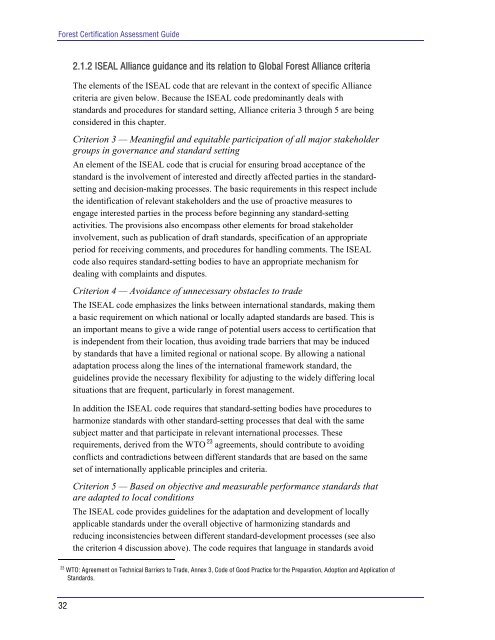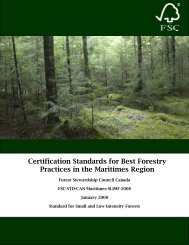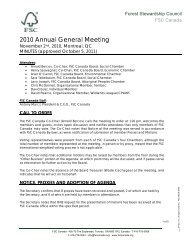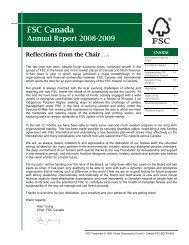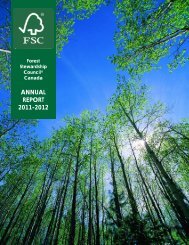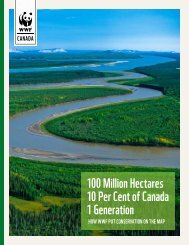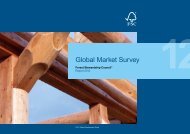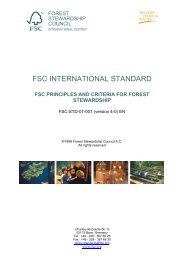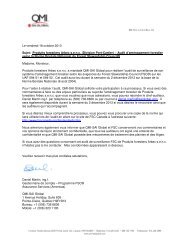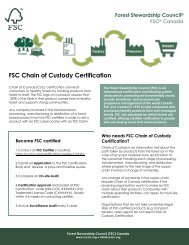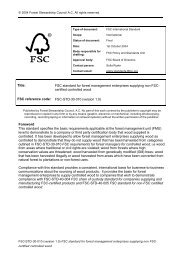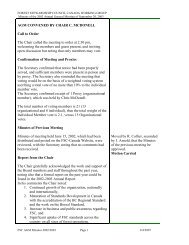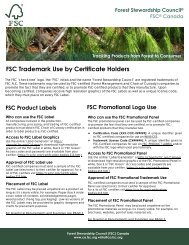WWF/World Bank Forest Certification Assessment Guide
WWF/World Bank Forest Certification Assessment Guide
WWF/World Bank Forest Certification Assessment Guide
- No tags were found...
You also want an ePaper? Increase the reach of your titles
YUMPU automatically turns print PDFs into web optimized ePapers that Google loves.
<strong>Forest</strong> <strong>Certification</strong> <strong>Assessment</strong> <strong>Guide</strong>2.1.2 ISEAL Alliance guidance and its relation to Global <strong>Forest</strong> Alliance criteriaThe elements of the ISEAL code that are relevant in the context of specific Alliancecriteria are given below. Because the ISEAL code predominantly deals withstandards and procedures for standard setting, Alliance criteria 3 through 5 are beingconsidered in this chapter.Criterion 3 — Meaningful and equitable participation of all major stakeholdergroups in governance and standard settingAn element of the ISEAL code that is crucial for ensuring broad acceptance of thestandard is the involvement of interested and directly affected parties in the standardsettingand decision-making processes. The basic requirements in this respect includethe identification of relevant stakeholders and the use of proactive measures toengage interested parties in the process before beginning any standard-settingactivities. The provisions also encompass other elements for broad stakeholderinvolvement, such as publication of draft standards, specification of an appropriateperiod for receiving comments, and procedures for handling comments. The ISEALcode also requires standard-setting bodies to have an appropriate mechanism fordealing with complaints and disputes.Criterion 4 — Avoidance of unnecessary obstacles to tradeThe ISEAL code emphasizes the links between international standards, making thema basic requirement on which national or locally adapted standards are based. This isan important means to give a wide range of potential users access to certification thatis independent from their location, thus avoiding trade barriers that may be inducedby standards that have a limited regional or national scope. By allowing a nationaladaptation process along the lines of the international framework standard, theguidelines provide the necessary flexibility for adjusting to the widely differing localsituations that are frequent, particularly in forest management.In addition the ISEAL code requires that standard-setting bodies have procedures toharmonize standards with other standard-setting processes that deal with the samesubject matter and that participate in relevant international processes. Theserequirements, derived from the WTO 23 agreements, should contribute to avoidingconflicts and contradictions between different standards that are based on the sameset of internationally applicable principles and criteria.Criterion 5 — Based on objective and measurable performance standards thatare adapted to local conditionsThe ISEAL code provides guidelines for the adaptation and development of locallyapplicable standards under the overall objective of harmonizing standards andreducing inconsistencies between different standard-development processes (see alsothe criterion 4 discussion above). The code requires that language in standards avoid23 WTO: Agreement on Technical Barriers to Trade, Annex 3, Code of Good Practice for the Preparation, Adoption and Application ofStandards.32


